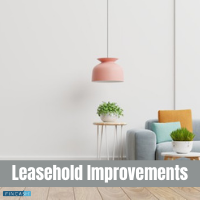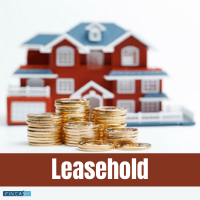
Table of Contents
Leasehold Improvements
What are Leasehold Improvements?
Leasehold improvements refer to changes made to a property that is rented so that it can be customised according to the needs of the tenant living there. The changes could include painting, flooring, light fixtures, etc. These improvements are usually undertaken by the Landlord. This could be done to increase the marketability of the rental unit. Tenants can also undertake this work. The leasehold improvements useful life is around 5 to 10 years.

In other words, leasehold improvements are also known as tenant improvements or build-outs. Please note that changes made to one tenant space do not mean improvement for the neighbours of the tenants. Moreover, changes made to the building or the parking lot does not qualify as leasehold improvement as it does not benefit a specific tenant.
In simple words, improvements made to the interior of specific tenant space is called Leasehold improvements. After the Lease ends the improvement belongs to the landlord. However, if the tenant is able to make these improvements it can be carried along without any damage to the landlord property. A leasehold improvement is both tangible and intangible in nature.
Examples of Leasehold Improvements
In the retail sector landlords usually paid for leasehold improvements to encourage tenants to rent the spaces for a long time. For instance, Mr X decides to lease space to company ABC. This space is a small retail store with four walls and no other equipment. Based on your green mint the landlord Mr X agrees to install shelves, register, seating and lighting before company ABC begins renting the space.
Leasehold Improvements Types
1. Tenant Improvement Allowance
A tenant improvement allowance (TIA) allows the landlord to pay commercial Leasehold. The landlord allows to set a budget for improvement and oversee the project. the tenant oversees the renovation projects, which may be a little time-consuming. If the budget exceeds the tenant covers the balance. The discount of rent may also be offered for leasehold improvements. The landlord might offer the tenant to rent-free for a few months. For example, the landlord might offer one-month free rent per year on a lease so the tenant can save on space alteration.
2. Building Standard Allowance
Here the tenant may decide among various selections the landlord provides. For example, the landlord might allow the tenant to choose out of a few colours of paint for the walls. This might not meet the tenants’ needs or satisfy the tenant. Other additional improvements are then covered by the tenant and the landlord oversees the project.
Talk to our investment specialist
All efforts have been made to ensure the information provided here is accurate. However, no guarantees are made regarding correctness of data. Please verify with scheme information document before making any investment.








